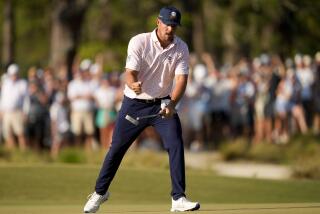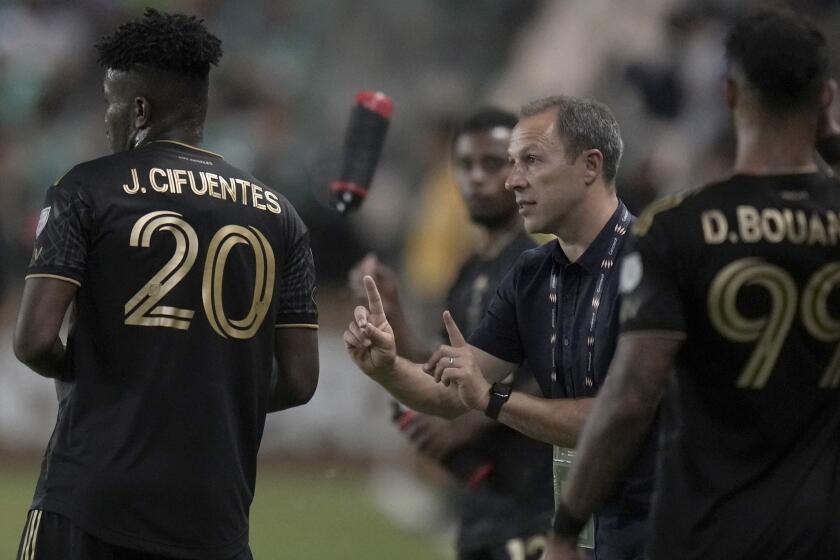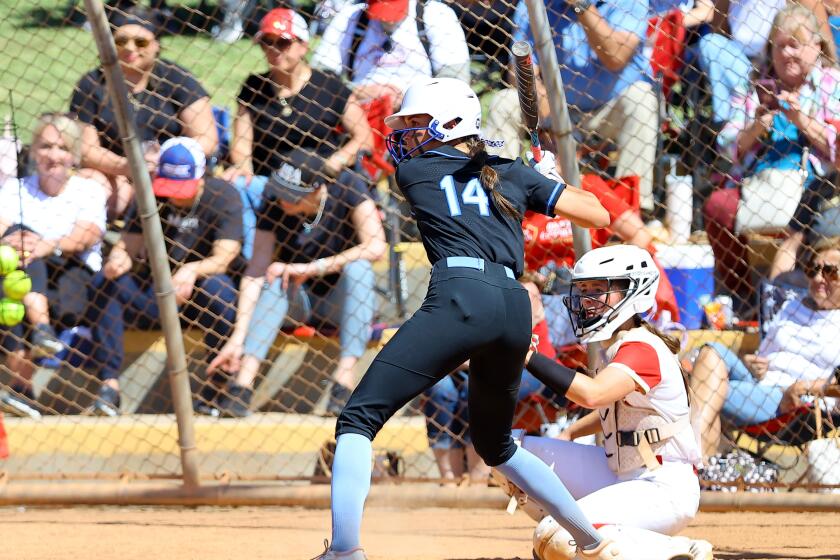A Championship That Isn’t for Everyone : U.S. Open: Long hitters need to rein in their game in this most difficult major, which begins Thursday at Medinah.
- Share via
What do Sam Snead, Seve Ballesteros, Greg Norman, Tom Kite, Ben Crenshaw, and Lanny Wadkins have in common, other than having been eminently successful professional golfers over the years?
None has won a U.S. Open championship.
Yet, Andy North, who has only three victories in a career that began in 1973 has won the U.S. Open twice, in 1978 and 1985.
Jack Fleck beat Ben Hogan in a playoff for the 1955 Open title, the extent of his celebrity.
Orville Moody, enjoying a flourishing second career on the senior tour, won only one tournament on the regular tour--the U.S. Open in 1969.
So the tournament that begins Thursday at the Medinah Country Club’s No. 3 course near Chicago is renowned not only as one of the four majors, but also for the frustration it has brought to some of the game’s best players.
Open courses are usually identified by severe rough, narrow fairways and slick greens.
Peter Kostis, the prominent teaching professional, contends that Open courses are set up to reward the patient, less daring players rather than an imaginative hitter such as Ballesteros.
“Playing the normal U.S. Open course is like creeping along in bumper-to-bumper traffic,” Kostis told Golf World. “If you are patient and willing to go along with the flow, you will get where you’re going.
“But if you keep changing lanes and trying to pass car after car, you’ll probably get into a lot of trouble.”
Ballesteros, who has won all over the world, including three British Opens and two Masters championships, has been particularly frustrated in the U.S. Open.
In 12 appearances, he has finished in the top 10 three times, missed the cut twice and has had some horrendous finishes--32nd in 1988 and 43rd in 1989.
“Seve is not a straight driver of the golf ball for starters,” Norman said of Ballesteros’ troubles in the Open. “That’s a big hindrance for him. He has a reputation of spraying the ball left and right. When you play a U.S. Open course, you have to get the ball in play.
“I think Seve would admit that himself, that his driver is not his strong suit, that it gets him into a lot of problems. I know Medinah, for example, if you don’t keep the ball somewhere in play, it’s going to be very tough getting the ball anywhere near the greens because of the big trees there. And there’s going to be thick grass and it’s a long course.
“I can see from that point of view why U.S. Open courses haven’t suited him. He has won at St. Andrews, that course is fairly wide open, and the Masters is fairly wide open, so it does give you the opportunity to recover from a sprayed tee shot.”
Norman hasn’t fared much better on Open courses. He came close to winning in 1984 when he lost in a playoff to Fuzzy Zoeller.
Otherwise, he has had five finishes of 33rd or worse.
The Medinah course is much like other Open venues, with tight fairways and thousands of oak trees narrowing the landing areas.
In addition, Medinah measures 7,195 yards, making it the longest Open course in the 90-year history of the event.
That alone may be an advantage for long hitters such as Norman.
“Yes, that would be a very positive step in my direction because it is a long golf course and you do have to shake the ball quite a bit off the tee,” he said. “Most U.S. Open courses we play, length is not a big advantage. But in this tournament length will be an advantage.”
Norman said that in the past, Open courses have tended to favor the conservative player with length not a factor.
“One of my disappointments with the way the USGA prepares golf courses is that they really try to eliminate the guy who can hit the ball long and hit it straight,” Norman said. “I think it’s unfair. I think a golf course should be set up where it tests everybody’s game.
“To me, the hardest shot in golf is hitting a ball 300 yards dead straight. I can hit every fairway if I pull a one-iron out and hit it 230 yards down the middle.
“Hopefully, Medinah will be set up where the longer hitter has a bit of an advantage because nine times out of 10, most U.S. Open courses favor the conservative type of player.
“Sometimes it’s very difficult for an aggressive type of player to really tone back for 72 holes his normal style of play.”
That assessment, however, doesn’t account for Kite’s failure to win the Open, or any other major, for that matter.
The all-time leading money-winner is not recognized for his length off the tee, or an obvious aggressive approach to the game.
Yet, Kite, in 18 years of Open experience, has had an overall lackluster record on courses that would seem suited to him. He has missed the cut six times and has finished in the top 10 only twice.
That long dry spell had seemingly ended last year in Rochester, N.Y., where the steady Kite had a three-stroke lead with 14 holes left in the last round of the Open.
But he quickly faded, finishing with a 78 and a tie for ninth.
Curtis Strange was the steady, unflappable player as he made 15 pars in a row on his way to becoming the first player since Ben Hogan in 1950 and ’51 to win consecutive Open championships.
There is one sure way to avoid being frustrated in the Open--just don’t play in it.
Moody, as the 1989 Senior Open champion, had an exemption to this year’s U.S. Open, but he declined the invitation.
“Medinah is just too tough,” he said. “I shot two over par two years ago there in the Senior Open from the short tees. Why would I want to go back and play the long tees and get even more frustrated?”
More to Read
Go beyond the scoreboard
Get the latest on L.A.'s teams in the daily Sports Report newsletter.
You may occasionally receive promotional content from the Los Angeles Times.










